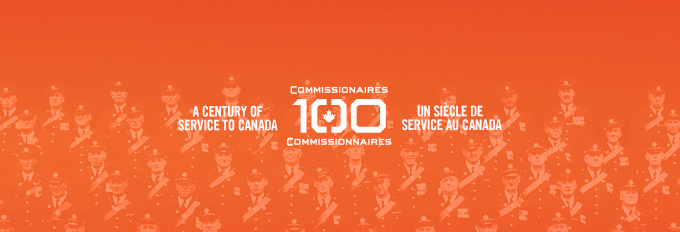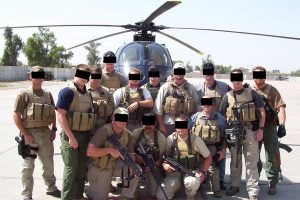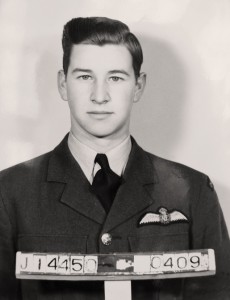
A young Arthur Theodore Clarkson was sent to Canada as part of the British Home Children program. He would serve Canada during the First World War.
Arthur Theodore Clarkson’s trauma began long before the trenches.
Labelled incorrigible for skipping school in order to care for his widowed mother, the boy had been removed from his family, sent to a group home, and shipped off to Canada on Feb. 25, 1909, at age 11. From there, the British Home Child—one of more than 100,000 such children consigned to life in the Dominion against their will between the 1860s and 1940s—was housed by a Tilbury, Ont., farmer.
“He was whipped and beaten so badly,” said President Lori Oschefski of the Home Children Canada organization, which raises awareness of the program and its complex legacies. “He would sleep in an unheated attic without glass, where snow came in and piled up at his feet until they became swollen with frostbite. He was still sent out to work as the infection grew, and he was soon unable to get out of bed. And the farmer later came in and horse-whipped him and dragged him out for labour.”
Doctors managed to save Clarkson’s feet in due course, but they remained deformed as he was subsequently sent to work elsewhere, an all-too-common fate for young Britons, a large proportion of whom were of impoverished backgrounds, destined for rural Canadian households as part of the ostensibly charitable initiative. Some, it seems, had markedly better experiences, yet others endured hardship and abuse.
After the outbreak of the First World War, Clarkson recognized a means to leave the past behind as best as anyone could. “He walked on those deformed feet down to the enlistment office,” remarked Oschefski—a daughter of a Home Child.
He was far from alone. Oschefski’s group estimates that upward of 25,000 Britons brought to Canada via the scheme served Canada during both world wars. Two, Walter Leigh Rayfield and Claude Nunney, earned the Victoria Cross in the Great War. At least 1,100 died on the Western Front—Clarkson being one of the luckier survivors—with some 689 killed in the 1917 battles of Vimy Ridge, Hill 70 and Passchendaele. Of those, the latter campaign claimed 146.
Still more wore a Canadian uniform in the Second World War, including veteran George Beardshaw, who is believed to be the last surviving British Home Child at age 102.
“They served a country that marginalized them,” explained Oschefski, “that didn’t welcome them, that stigmatized them.” Here, she shares with Legion Magazine more about their lives and times.

Lori Oschefski is president of Home Children Canada, a Canadian organization dedicated to preserving records of the British Home Children program. She is the daughter of a Home Child. [Courtesy Home Children Canada]
About the Home Children Canada organization
I became involved in the story of Home Children in 2007, when I discovered that my mother was actually a Home Child. That’s when I began researching. The more I looked into the stories, the more I became outraged that such a significant part of our nation’s history has been largely and often ignored and swept under the carpet.
Our organization has since taken on all kinds of projects, one of the biggest being our British Home Child registry and service index. The registry has about 86,000 children collectively, out of over 100,000 that came to Canada. Each page offers information on the children themselves, who they were, their names or alternate names, dates they came to Canada and more. We’re also cataloguing information about the 25,000 former Home Children who served. We have just under 8,000 currently, so there’s quite a long way to go, but you’ve got to start somewhere.
About British Home Children trying to return home
Even back in 1869, at the very beginning of the scheme, certain people recognized it as human trafficking. These British children weren’t brought to Canada for love. They were brought to work. They were brought over to act as farm labourers and domestics, treated as wastes, strays and gutter dwellers, without any intention of ever returning them to their old lives back in Britain. This was supposed to be it.
The First World War was an opportunity to change that. By 1917, it’s been said that virtually 100 per cent of all eligible former Home Children enlisted [for service] in Canada. When you have an almost 100 per cent enlistment rate, that’s not just a patriotic cause; that encompasses a wide variety of reasons, including returning to Britain.
George Beardshaw, who fought in the Second World War, said to me, ‘I joined so I could go back to Britain and learn why the hell my mother had sent me in the first place.’
About British Home Children’s service
We have two [WW I] Victoria Cross recipients, Walter Leigh Rayfield and Claude Nunney, who both supplied false information on their attestation documents. That was often because the Home Child didn’t know what that information really was, but it could also be because if one of these children had been working on a farm and was indentured to a farmer, they could actually prevent them from enlisting. I’ve read stories of farmers going to enlistment offices and taking boys back to work.
The first day of the Battle of Vimy Ridge was devastating for these former Home Children in uniform. Over that one day alone, at least 52 were killed in action.
Unfortunately, we don’t know a great deal about their service in the Second World War. We’re only just really starting to scratch the surface to get some statistics and some idea of what actually happened to them. For now, we’re so fortunate to have veteran George Beardshaw, who served with The Queen’s Own Rifles [of Canada].
I can’t stress enough how much we must recognize their collective service.
This abridged interview has been edited for brevity and clarity.
Advertisement



















